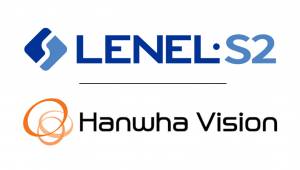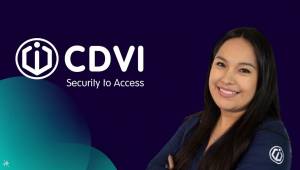 The migration of email to the cloud can be a very interesting alternative, now we are going to analyze some success stories such as the social network Pinterest.
The migration of email to the cloud can be a very interesting alternative, now we are going to analyze some success stories such as the social network Pinterest.
By Osvaldo Callegari*
Social media is displacing various web 2.0 service options on the Internet, somehow capturing the use of marketing and advertising and promoting new products.
Case Study: Pinterest.com
The group of engineers that make up this company have agreed on the outsourcing of email to reduce their costs. This network is one of the most prominent recently named by Fortune magazine as one of the fastest developing sites of all time.
Pinterest relies primarily on email as a critical communication tool to drive user engagement.
A small technical team was left with the task of managing the flow of millions of emails per month through their systems and the productivity challenges that come with sending high volume. They needed a solution that could focus on responsiveness.
While its engineers were able to localize to these issues, its mandate was strategically to grow within its operating systems – not to manage the flow of email on a day-to-day basis.
They needed a solution that could focus on deliverability, while continuing to improve the value of their application.
As a result, they externalized their email operations with SendGrid, a cloud-based email infrastructure platform.
Nowadays, this team no longer cares about email delivery. From that moment on, they have a limited participation since the rest is solved with a cloud service.
A snapshot of your choice
When deciding whether to build your own on-premises email infrastructure versus outsourcing to a third-party vendor, it's important to identify the resources needed to implement each solution.
While there are many configuration items for an email server, the following checklist provides an overview of the differences between the options.
By focusing on this critical component of any email program, delivering messages to your subscribers, you can make decisions about how each solution will impact a graphical way of personnel resources, development timelines, and conclusions.
How to make the right choice
If you have your email architecture already in place or are thinking about building your own system from scratch, be sure to follow these key steps to determine which method is right for your organization.
1. Determine the true cost of maintaining your own infrastructure. Consider both the hard and soft costs of email operations, including hardware, software, financing, staffing, storage, archiving, filtering, and mobility. Don't forget to identify the trickle-down effect they may have on other departments, such as customer service.
2. Summarize your needs and research from reputable providers.
Figuring out if a hosted support solution can help rationalize costs, but then expand your thinking to identify if moving to a fully hosted email solution will be the healthiest thing over time.
3. Compare your facility costs with that of the Saas software-as-a-service provider.
Many services publish their price lists of their products on their website or provide
customized solutions for high-volume shippers.
For example, SendGrid has a pricing calculator to help determine the right plan for you and allow you to better project your long-term operating costs.
4. Analyze customer testimonials and case studies, and ask for references from your sector to know the levels of customer satisfaction in the long term, this can do a lot to influence the final decision with the experience of your colleagues.
SendGrid's cloud-based email infrastructure relieves businesses of the cost and complexity of maintaining custom email systems.
It provides reliability in delivery, scalability, and real-time analytics along with flexible APIs that make custom integration a sigh.
This infrastructure is ready to scale and meet demand at any time, eliminating email headaches, so you can focus on your core product and meet your company's email demands.
They currently send more than 6 billion emails per month for more than 70,000 web app companies and developers including Foursquare, Pinterest, Airbnb, Twilio, Spotify and Pandora.
So, whether you're sending 100 emails or billions of emails, you save time, resources, and money by focusing your engineering resources on your business and leaving the technical work for SendGrid.
For more information about SendGrid, visit www.sendgrid.com
Summary
This is especially true for small and medium-sized businesses that send billions of emails per month, yet they don't have the resources to hire in-house staff to maintain their own systems.
The CIO Cloud Computing Global Adoption Survey revealed that the key drivers of cloud adoption are business agility, infrastructure reducing costs, reducing IT and resource management, increasing capacity and increasing productivity, but security still serves as a periodic trigger factor when making the switch to a SaaS solution.
However, trust is growing between developers and their suppliers. In fact, despite security issues, 82% of U.S. businesses trust the cloud enough to use it.
Pinterest Historical/Technical Information
Pinterest allows users to save and classify by categories, images on different boards. They can also follow other users with the same tastes and interests. The popular categories are travel, cars, movies, humor, home design, sports, fashion and art, it would be like what instagram is currently.
Its development began in December 2009 and was released as a private beta in March of the following year when the site proceeded with open beta, invitation only.
Silbermann said he personally wrote to the site's first 5,000 users, offering them his personal phone number and even a meeting with some of them.
Nine months after the launch, the website had 10,000 users. Silbermann and some programmers operated the site from a small apartment until the summer of 2011.
In early 2010, the company's investors and co-founder Ben Silbermann tried to interest a New York-based magazine publishing company in buying Pinterest. The publisher refused to meet with the founders.
The launch of an iPhone app in early March 2011 brought a higher than expected number of downloads.
On August 16, 2011, Time magazine included Pinterest in its article: "The 50 Best Websites of 2011."
The Pinterest app for the Iphone was last updated in May 2012 and an app for the Ipad is now available for download. Pinterest Mobile was launched in September 2011 and is a version of the website for non-iPhone users.
In December 2011, the site became one of the top 10 largest social media services, according to data from HITWISE, with 11 million total visits per week. The following month, it drove more referral traffic to retailers than Linkedin, Youtube, and Google.
The same month, the company was named the best new startup of 2011 by TenchCrunch. The well-known entrepreneurs and investors are: Jack Abraham, Michael Birch, Scott Belsky, Brian Cohen, Shana Fisher, Ron Conway, Firstmark Capital, Kevin Hartz, Jeremy Stoppelman, Hank Vigil and Fritz Lanman.
In January 2012, ComScore reported that the site had 11.7 million unique users, making it the fastest site in history to break the 10 million unique visitor mark. Pinterest's broad reach helped it reach an average of 11 million visits each week in December 2011. Most of the users of the site are women.
At the South by SouthWest conference in March 2012, Silbermann announced that the profile pages were being revamped and would be implemented promptly.
On March 23, 2012, Pinterest released updated terms of service that removed the policy that gave it the right to sell its users' content. The terms would take effect on April 6.
According to Experian Hitwise, the site became the third largest social network in the United States in March 2012, surpassing Linkedin and Tagged.
In April 2012, co-founder Paul Sciarra left his position at Pinterest for a consulting job as an entrepreneur-in-residence at Andreseen Horowitz.
On August 10, 2012, Pinterest opened up to everyone without asking or requiring an invitation.
In addition, the Pinterest app for Android and Ipad was also released on August 14, 2012. The Android app was designed for Android phones and tablets of varying price, speed and size, while the iPad app is described as "the best Pinterest experience yet".
On September 20, 2012 Pinterest announced that it had hired its new head of engineering, Jon Jenkins. Jenkins worked at Amazon, where he spent eight years as an engineering leader and was also director of tool development, director of platform analytics, and director of the web platform.
In October 2012, Pinterest announced a new feature that would allow users to report others for negative and offensive activity or block them if they don't want to see their content. Pinterest said they want to keep their community "positive and respectful."
As you will see, these types of companies with a quick start make history very quickly and in their advances they consider all the tools available to make their project a success.
The names and brands mentioned belong to their respective companies, the products mentioned are analyzed for reference of products that apply these technologies without having a preference for any of them. Source some data from Pinterest Wikipedia.
*To contact the author of this article write to [email protected]

























Leave your comment